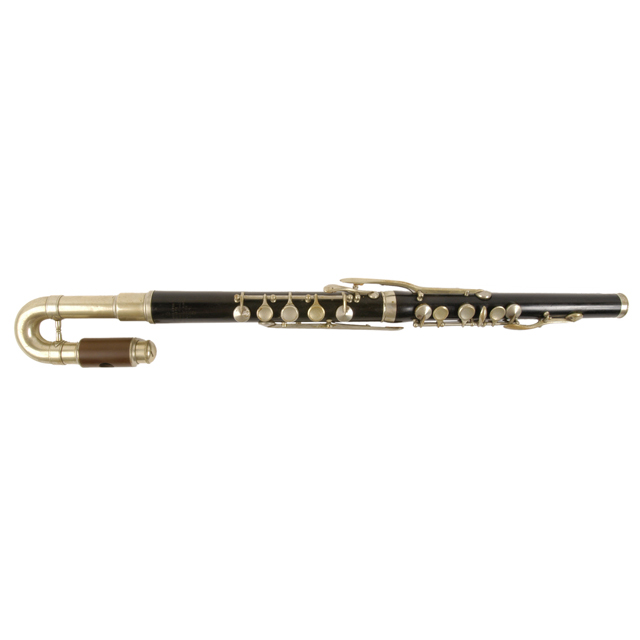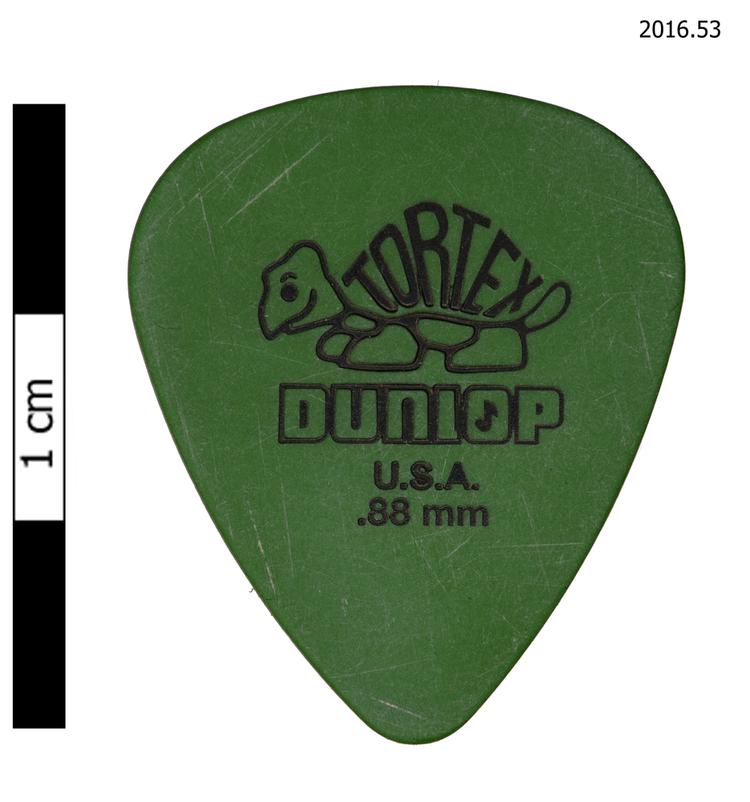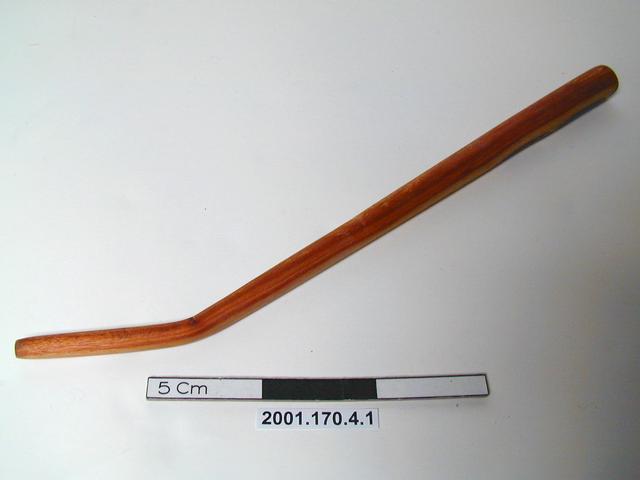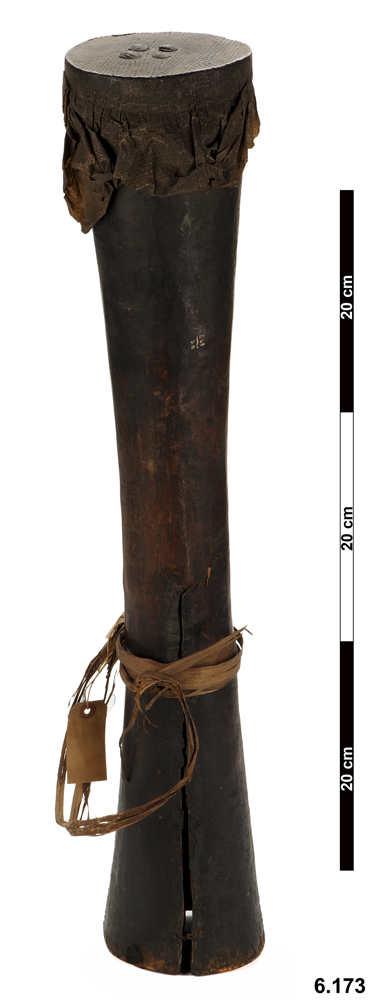
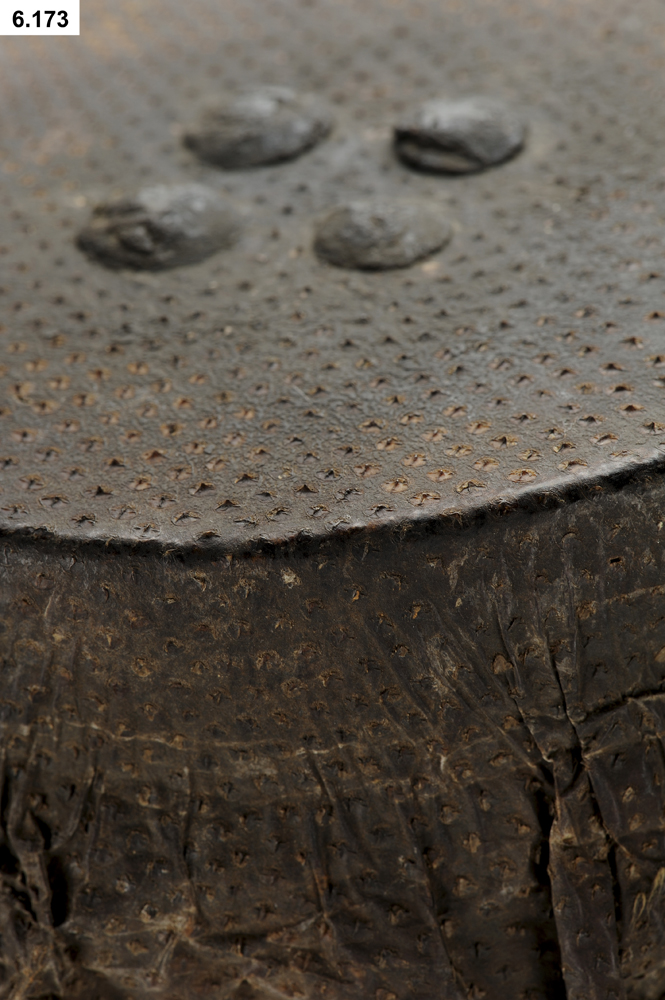
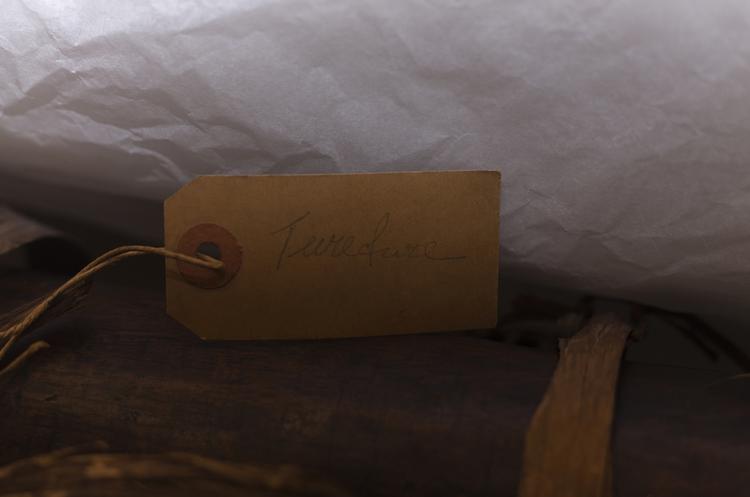
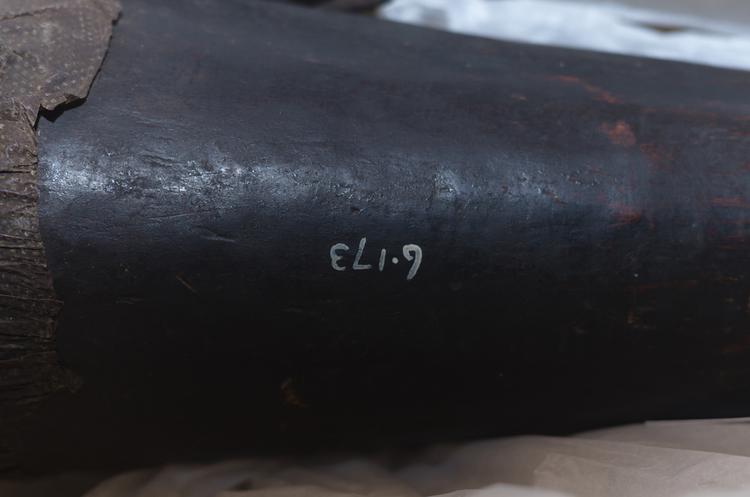
Single-membrane hourglass shaped drum. The head with four black tuning patches of beeswax(?)
Drum, Gama, Kiwai people, Tureture, Gulf Province, Papua New Guinea. The gama drum of the Kiwai people was their most prized musical instrument. In some ways, it was a ‘classic’ example of the New Guinea style of drum that has become generically called a kundu: it was cut from a single hollowed log, and was square-ended at both ends; it had a narrower waist in the middle, and it was carved with a square-ended handle at its narrowest point for holding the drum. Kiwai drum makers usually relied, as here, on the skin of some kind of monitor lizard for their drum skins, although the Kiwai who lived on Goaribari island often used Pufferfish skin instead. In general, the inner chamber of the drum was slowly burned out using hot embers, and the outside surface was then shaved down until the drum’s note became clear and true. Wood, fish skin. Late 19th Century. Collected by the Cooke-Daniels Ethnographic Expedition, and presented to the Museum in 1906 by Dr. C. G. Seligman.




